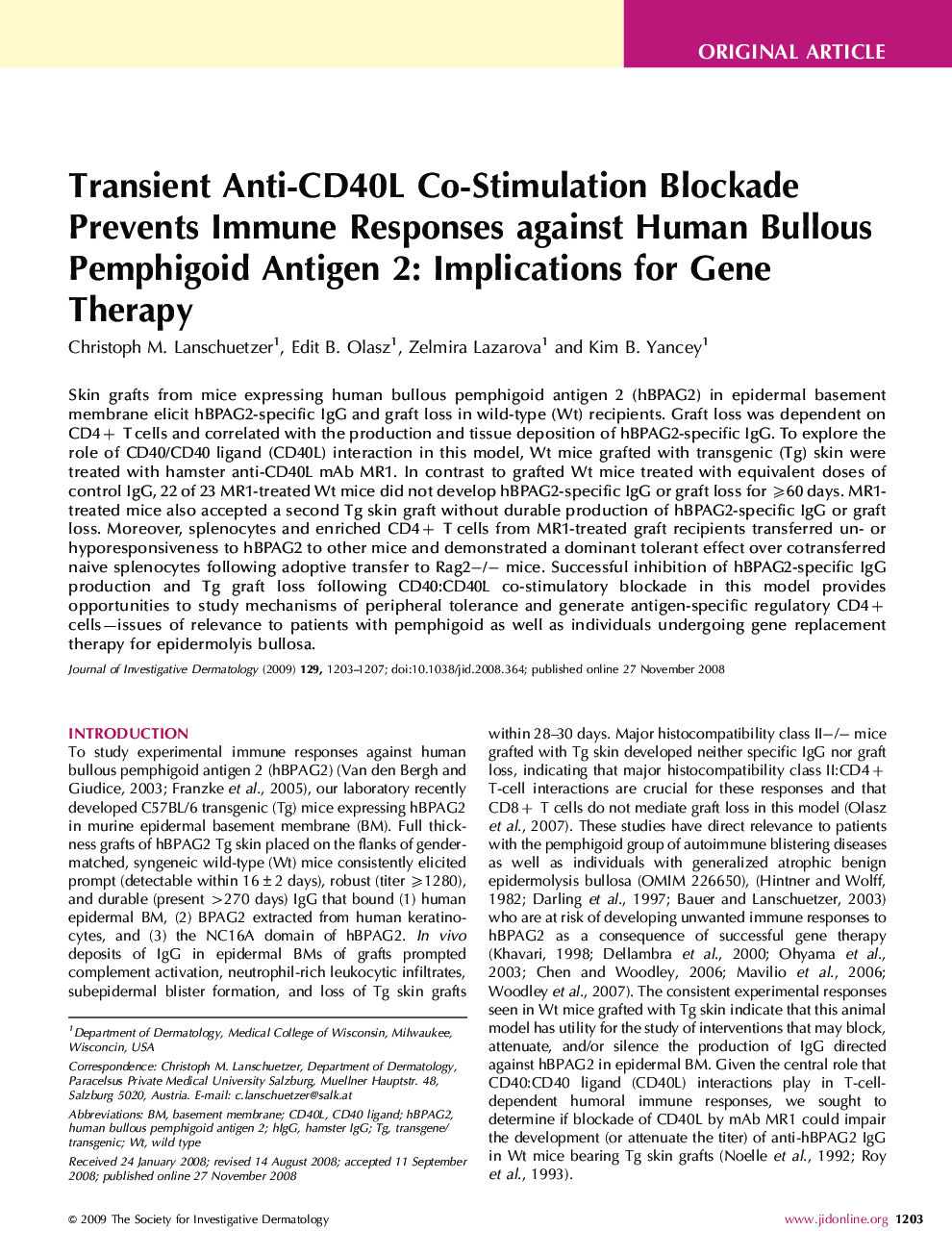| کد مقاله | کد نشریه | سال انتشار | مقاله انگلیسی | نسخه تمام متن |
|---|---|---|---|---|
| 3217046 | 1203590 | 2009 | 5 صفحه PDF | دانلود رایگان |

Skin grafts from mice expressing human bullous pemphigoid antigen 2 (hBPAG2) in epidermal basement membrane elicit hBPAG2-specific IgG and graft loss in wild-type (Wt) recipients. Graft loss was dependent on CD4+ T cells and correlated with the production and tissue deposition of hBPAG2-specific IgG. To explore the role of CD40/CD40 ligand (CD40L) interaction in this model, Wt mice grafted with transgenic (Tg) skin were treated with hamster anti-CD40L mAb MR1. In contrast to grafted Wt mice treated with equivalent doses of control IgG, 22 of 23 MR1-treated Wt mice did not develop hBPAG2-specific IgG or graft loss for ≥60 days. MR1-treated mice also accepted a second Tg skin graft without durable production of hBPAG2-specific IgG or graft loss. Moreover, splenocytes and enriched CD4+ T cells from MR1-treated graft recipients transferred un- or hyporesponsiveness to hBPAG2 to other mice and demonstrated a dominant tolerant effect over cotransferred naive splenocytes following adoptive transfer to Rag2-/- mice. Successful inhibition of hBPAG2-specific IgG production and Tg graft loss following CD40:CD40L co-stimulatory blockade in this model provides opportunities to study mechanisms of peripheral tolerance and generate antigen-specific regulatory CD4+ cells—issues of relevance to patients with pemphigoid as well as individuals undergoing gene replacement therapy for epidermolyis bullosa.
Journal: Journal of Investigative Dermatology - Volume 129, Issue 5, May 2009, Pages 1203–1207